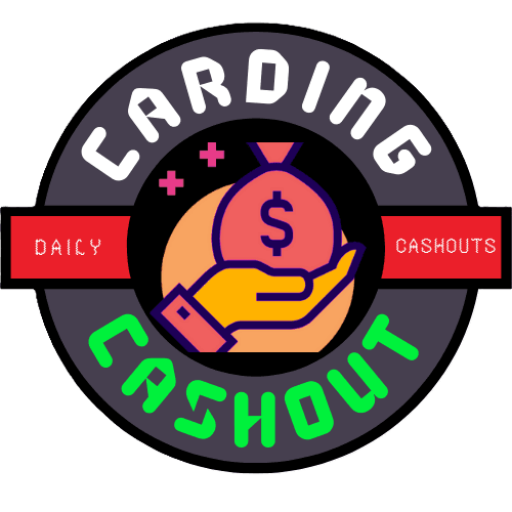Carding and Cashouts
How Carders Get Credit Card Information Online
How do I obtain credit card details online? Learn how carders get credit card information online. In this case, there are two conceivable outcomes: unauthorized or authorized corporate use. To serve your purposes, this publication sits in between. You should be aware that obtaining someone’s credit card information without their permission is theft and is therefore prohibited.
The point is that even though their bank is opposed to the notion, if someone willingly provides you with their card information, they trust you enough to do so, and it is lawful. However, if you’re going to use illegal means, you need to use whatever means necessary to get the card information. This might indicate that you intend to shop without paying or to likely sell or otherwise disclose the card information online in exchange for cash.
Suppose you intend to or merely want to learn how carders/hackers obtain working credit cards online. This publication explains the most commonly used methods out there. Knowing these techniques also helps you protect your card from unauthorized use.
Read: How to Shop Online Without OTP (2023 Complete Guide for Beginners)
How to get credit card information online
The average person will say “there’s no way for someone to know another person’s credit card information”. This isn’t true, there are many online ways to do so, and it happens every day. Below are the online ways to get credit card information:
1. Online phishing
Most likely, you are already aware of traditional SMS and phone call phishing. You would probably ignore or report someone if they contacted or sent you a message professing to be from your financial institution and asking for your credit card information. Now, that’s how intelligent you’ve become.
However, carders have grown even smarter. Only a few still try the luck of phishing with SMS and phone calls. Most now go the online way—using clone websites to steal card information.
How does this work? Usually in two ways – (1) a fraudster can fake a website or application that looks exactly like your bank’s website or an e-commerce site like Amazon or straight up create an e-commerce website selling items at a too-good-to-be price.
Read also: List of Cardable Sites (No VBV Sites)
The URL of the scam site is then shortened with a link-shortening service such as Bitly.com. URL shortening is important to conceal the fake URL that directs to a cloned site that steals your credentials. Now, when on the website, the con artist would have duplicated the login or payment pages to appear so genuine. Your information is transferred to the scammer once you log in and submit your card details, and you are then taken to the main page. You don’t even realize what is happening because it happens in a matter of seconds.
Regarding the e-commerce site that sells inexpensive goods, when you enter your credit card details on the checkout page, the details are compromised and you frequently never finish entering the information, let alone receiving the thing you ordered.
2. Malware and spyware injection
Technical but not too difficult for less experienced hackers. The typical hacker will get their victim to install a keylogger on their computer (anyone may be a hacker). Software for keylogging can be acquired from the internet and set up according to the developer’s instructions.
The target is then made to download the keylogger in their system, which is operated remotely by the hacker whenever a data connection is detected.
Every keystroke that the target makes will be recorded by the logger. The target must typically be coerced into taking part in any activity that involves inputting their credit card information for any reason. After doing this, the hacker on the other end keeps tracing keystrokes until they locate the credit card. As you can anticipate, other sensitive information is also compromised in this situation, in addition to credit card information.
Depending on the hacker, malware injection can also be executed in a variety of other methods. Some people will blatantly intercept outgoing data, which may contain credit card information, while others may exploit compromised browser data.
Read this tutorial: Aliexpress Carding Method for Beginners
3. RFID skimming
RFID skimming isn’t actually a way to obtain credit card information online. However, it uses RFID technology, which wirelessly intercepts data from credit cards with RFID chips or even from cell phones and tablets.
RFID skimmers make use of a near-field communication-enabled device that records unencrypted data from credit cards or the RFID chip of a device to get the card information, including cardholder name, card number, expiry date, and CVV.
Well, it turns out RFID is not really worth the effort for a carder or hacker since it is “a hit-or-miss proposition”, according to IDX. Moreover, contactless credit cards are encrypted and most credit card chips are not RFID-capable.
4. Data breaches
When sensitive data is removed from a website’s database without the administrators’ knowledge or consent, a breach has occurred. Due to the possibility that it might happen to both small and large firms, websites that hold credit card information run the risk of having it stolen by hackers.
The misery in this is that even the financial institution or e-commerce website may not be aware of the breach until after some time. Even if they are aware, they need some time to fix it. That little time is enough to get so much hacked credit card information with money leaked on the dark web.
A data breach is usually quite advanced and requires a pro or a group of pros to get it done. Let’s add that it can have a devastating effect on the business. Perhaps, one wants to learn how to become a hacker for the possibility of pulling this through.
5. Compromised public Wi-Fi networks
When a cardholder submits sensitive information like credit card numbers while connected to a public Wi-Fi network, it may be obtained if the network is not secure.
A hacker might set up a free public Wi-Fi and let anyone connect to it. The hacker intercepts the target’s device information while they are connected and tries to entice them to sign on so they may give their credit card details. Wi-Fi data can be intercepted using a variety of techniques, such as sniffing data packets and man-in-the-middle attacks.
A hacker just needs to be well-versed in a certain technique to get the credit card information of the connected user.
Read Next: How To Write Track 1 and 2 Dumps With PIN – Latest Tutorial to Write Dumps




